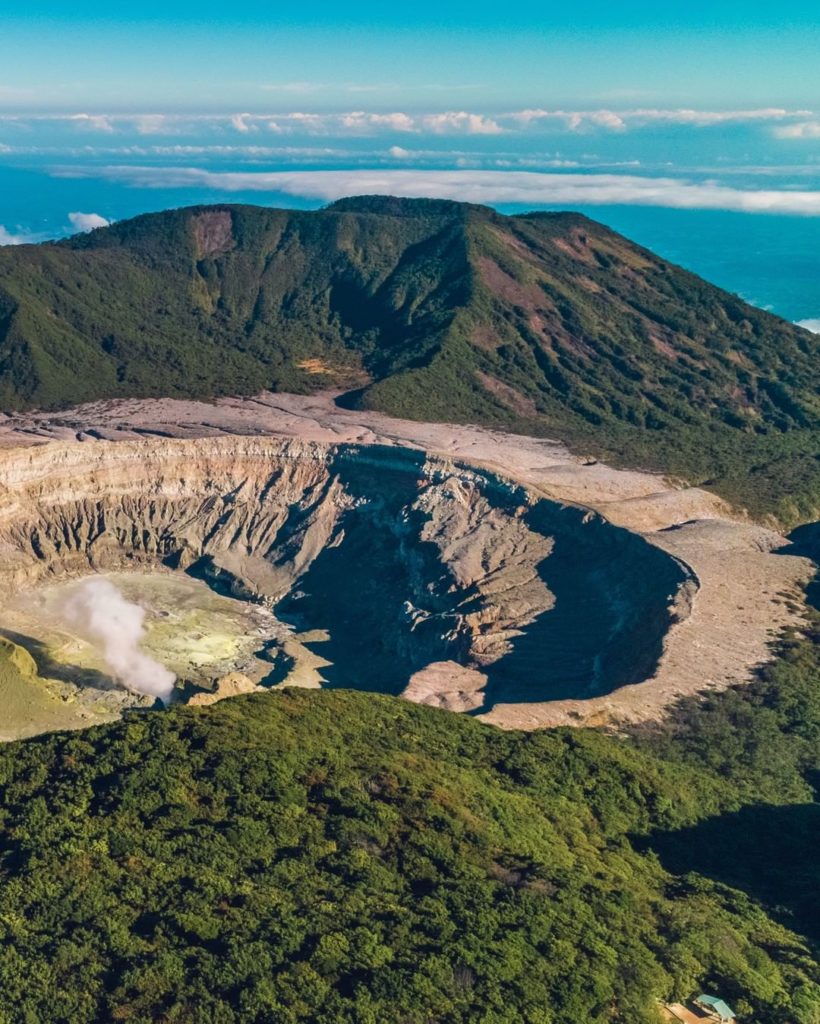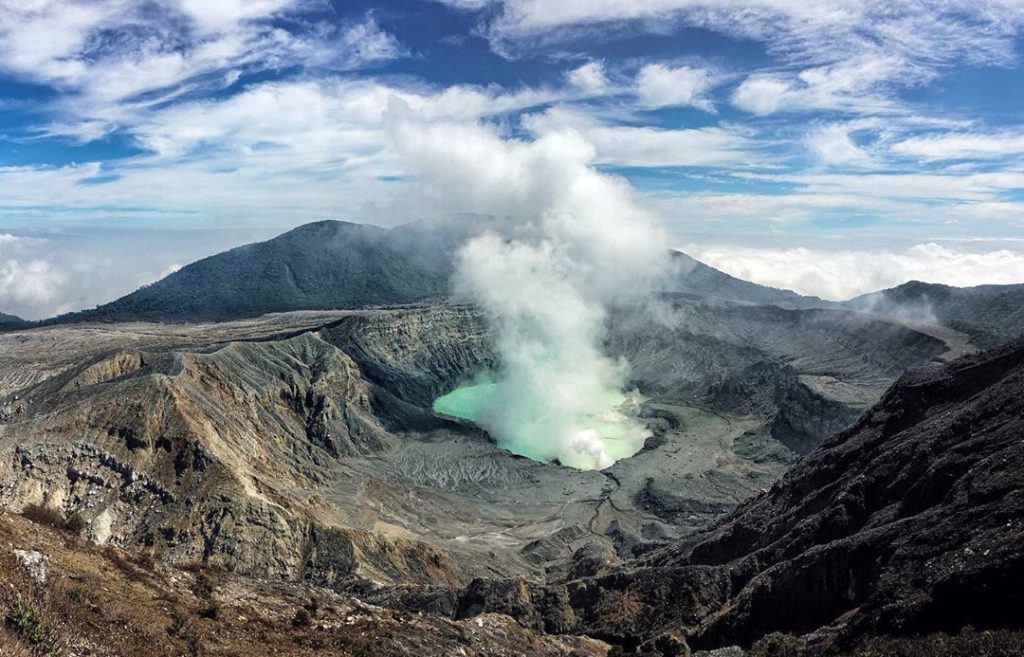Park Info
It is active and has one of the largest craters in the world. Know this colossus without traveling long distances.
Not only has one of the largest craters in the world but is located in the forests of Central Mountain Range, which boasts magnificent natural landscapes: this is the Poas Volcano National Park.
Being located in the province of Alajuela, it offers visitors easy access to major cities of the country.
This place lets you explore its attractions through a network of trails, especially in a cold climate tempered by a faint drizzle that most of the year is imposed.
You can also enjoy the varied cuisine, worthily represented by fruits such as strawberries, as well as some dairy derivatives.
You can also appreciate cultural manifestations of communities surrounding the park, such as Poasito, Fraijanes, Varablanca, and San Pedro de Poás. These are all recommended stops for a complete tour.
Póas Volcano National Park was established in 1955 with an approximate land area of 1200 ha. With the ratification of 1970 and subsequent extension of its territory by Executive Decree No. 22961-MIRENEM on January 19, 1994, the extension of the park has reached 6506 ha.


This area is called botos by the Spaniards, referring to a group of Indians who populated the foothills at the Northside of the volcano. The term Póas can be derived from the Latin name “quills / púas” due to the presence of some spiny plants in the area or by the existence of a town called “Púas” located near the massif.
Póas Volcano has a history of eruptions which stands the one of 1910, which consisted of a huge cloud of ashes that rose to about 26.246 feet (8000 m). This National Park is one of the most important natural attractions destinations for national and international tourism.
Main Attractions
Main crater: It is circular in shape and measures about 4330 feet (1320 m), 1049 feet (320 m) deep. Its edge is composed of pyroclastic materials such as blocks, bombs, ashes, and 7540 years old lavas. It boasts a hot and acidic water lagoon with temperatures between 68 Fahrenheit (20° C) and 122 Fahrenheit (50 ° C).
Von Frantzius Cone: It is located about 2952 feet (900 meters) North Side of the active crater and is partially destroyed on its southern flank. It has an irregular horseshoe shape open to the south, with small escarpments covered with vegetation.
Laguna Botos: Old crater occupied by a cold lake of 1312 feet (400 m) in diameter and 46 feet (4 deep). Its bottom is half-plane and sedimented by materials of the interior walls with the contribution of organic material. (Currently closed).

Birds: Typical species in the area include: Tangara de monte (Cholorospingus pileatus), Saltón patagrande (Pezopetes Capitalis), Jungle soterrerey (Henicorhina lecophrys), Zorzal piquinegro (Catharus gracilirostris) Fire throated hummingbird (fiery-throated hummingbird), Tan hermit hummingbird (Glaucis aenea), Quetzal (Pharomachrus mocinno).
Mammals: Mammals are not abundant, although coyotes (Canis latrans), weasels (Mustela frenata), rabbits (Silvilagus dicei), smelly skunks (Conepatus semistriatus) and among the most common are the Poas Squirrel (Sciurus deppei) and the nine-banded armadillo (Dasypus novemcitus).
Flora: In the area of public use they can be observed plant associations related to the cloud forest, which highlight species like the poor umbrella (Sombrilla de pobre, Gunnera insignis) and encinos oak (Quercus sp.).
Recommended
- Comfortable clothes and closed shoes for walking. On sunny days hats and sunscreen are required; on cloudy and rainy days, coats and capes.
- Make sure you use the booking system to enter the national park.
- Weather conditions at sightseeing places and trails are changing, so there is not always certain that the main attractions are going to be clear.
- Given the volcanic activity, please pay attention to the regulations and instructions given by park guards to protect your physical integrity in the event of an emergency.
Services
- Secure parking
- Sanitation services
- Non-potable water
- First aid services
Restrictions
It is important to note that, as in other protected areas, at Poás Volcano National Park, the following are not allowed:
- Being drunk in the park, consumption or use of drugs.
- Entering with animals or pets.
Remove stones, plants, or other natural resources from the wilderness. - Going out from trails or areas for public use.
- Smoking (Law No. 9028).
- Throw garbage.
- There are no trash bins in the national park.
- The visitors should carry the trash until they have access to a container where it can be disposed of.
Prices
- ¢ 1000 13+ national and resident visitors.
- ¢ 500 national and resident children (2 to 12 years old).
- $ 15 non-residents visitors over 13 years.
- $ 5 non-residents children (2 to 12 years old).